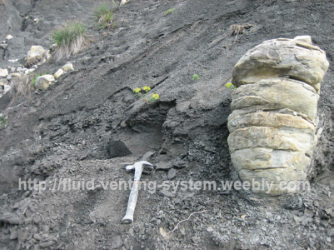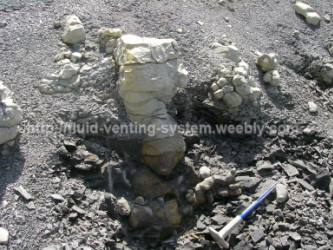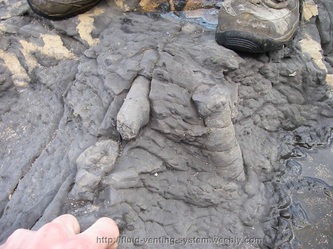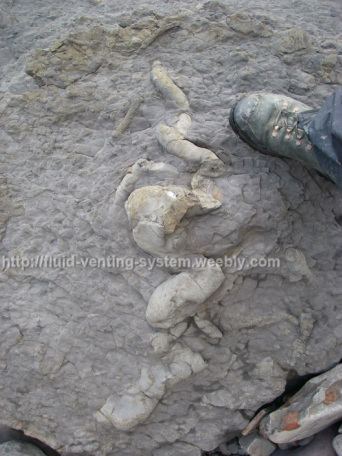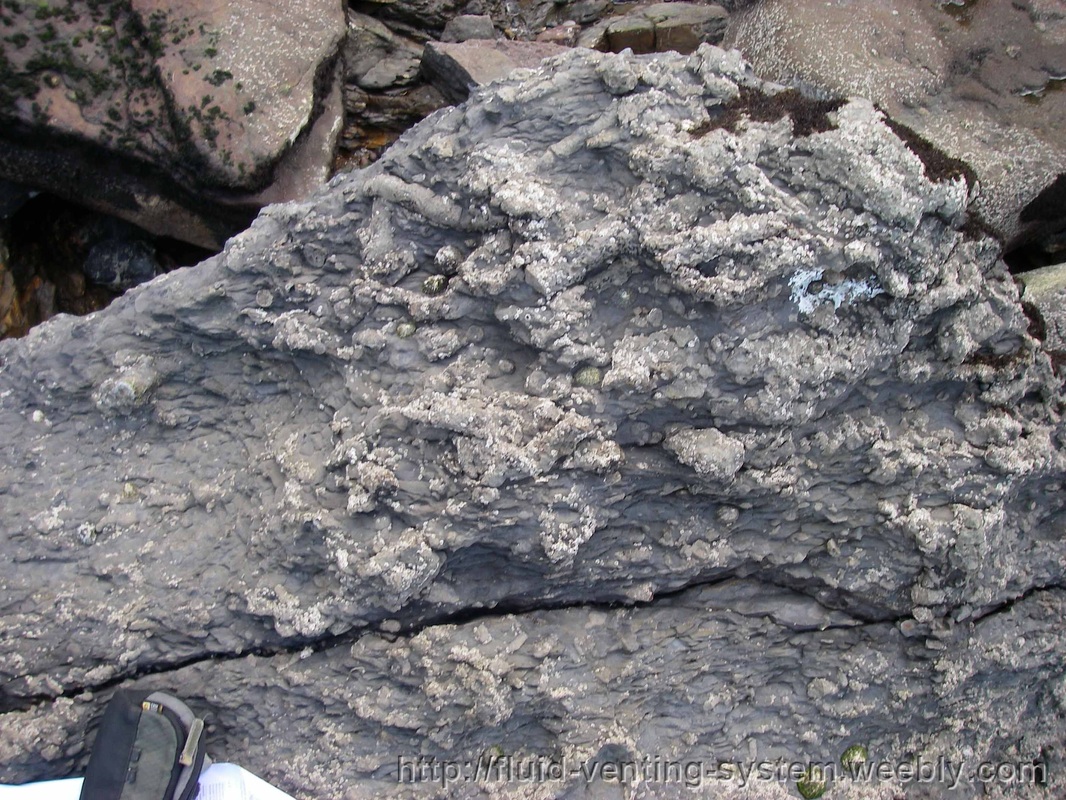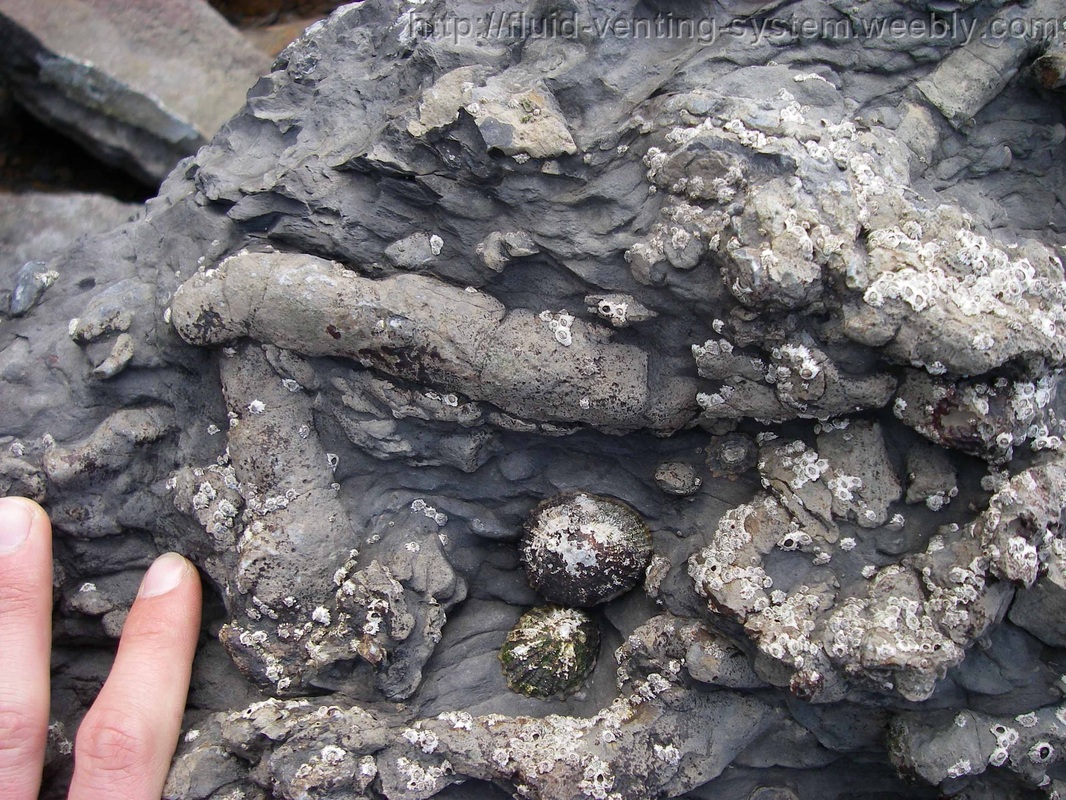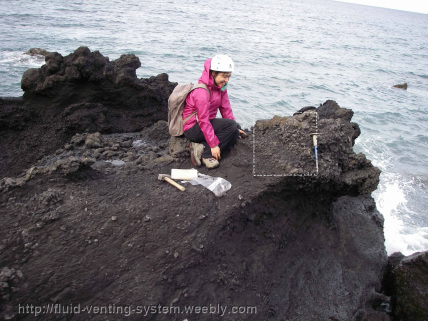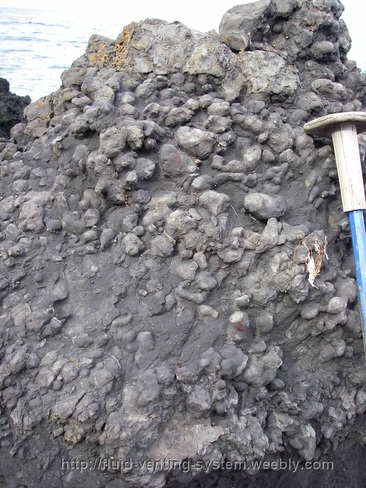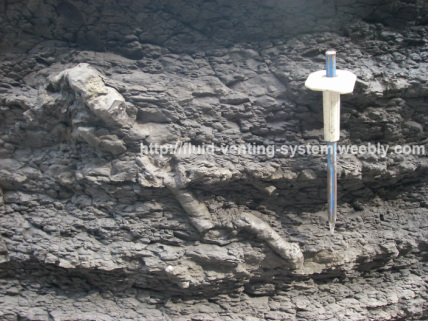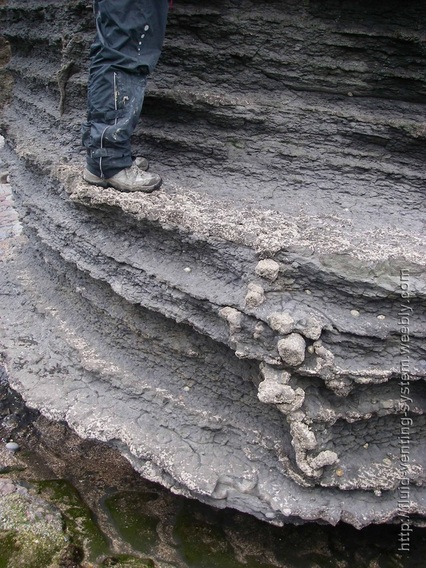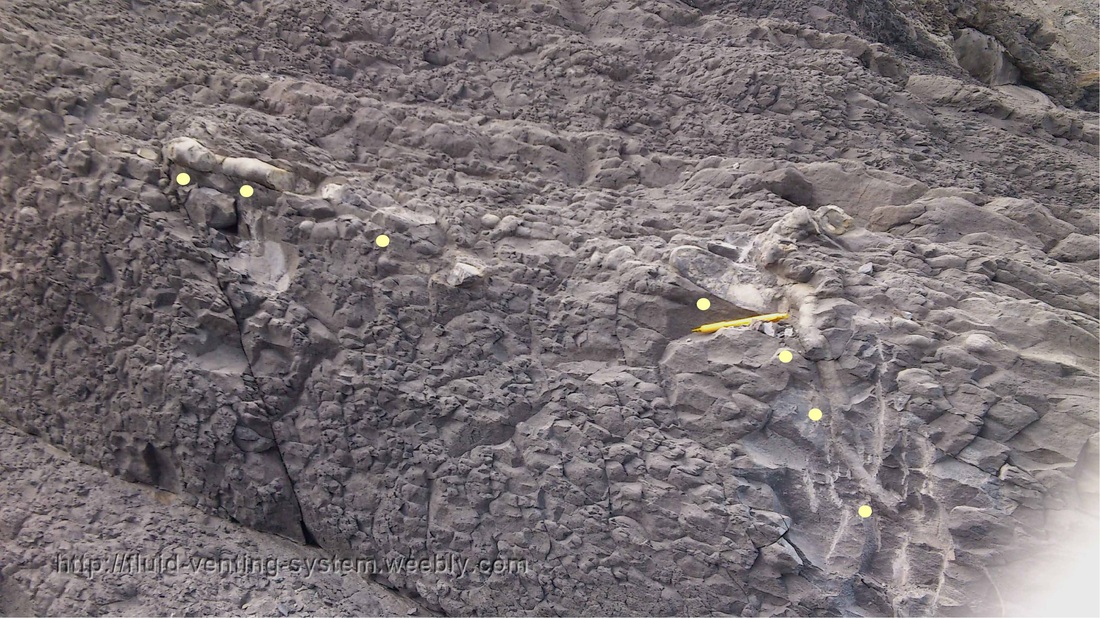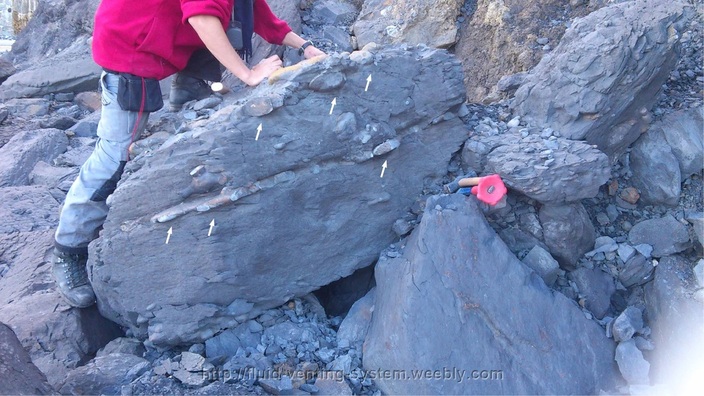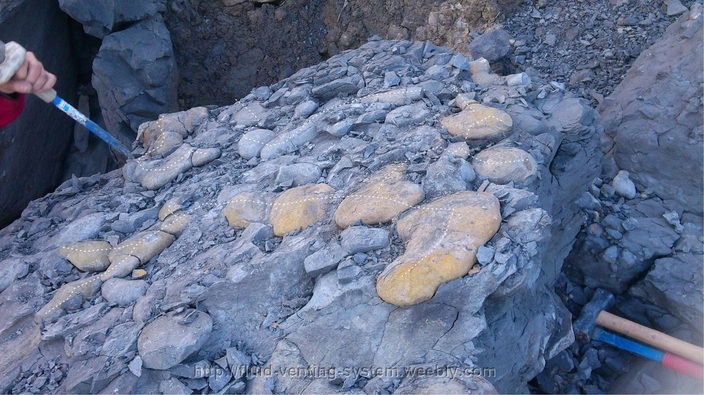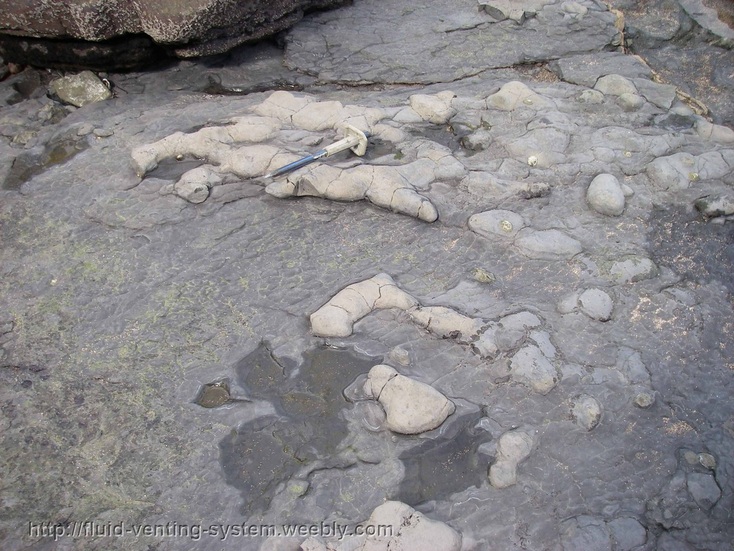The morphology of Methane Derived Authigenic Carbonate (MDAC) tube in outcrops by Jean-Philippe Blouet & Sutieng Ho
In the classification of Blouet et al. (2012), Methane Authigenic Derived Carbonate (MDAC) tubes have been classified according to their morphologies.
In addition, MDAC tubes have various sizes, on the field they are observed to exhibit different sizes range from:
In addition, MDAC tubes have various sizes, on the field they are observed to exhibit different sizes range from:
- diameter x10s cm (Fig. 1a)
- diameter 10-20 cm (Fig. 1b)
- diameter <10 cm (Fig. 1c)
Fig. 1(a-c) MDAC tubes in marl formation. Left) a fossil MDAC tube with a diameter of about 35 cm, Middle) 15 - 20 cm, Right) tubes with diameters less than 5 cm.
|
The length of tubes can also vary from meter to centimeter scale. In the field we observed the lengths vary from:
Example of MDAC tube with meandering form
|
Example of MDAC tubes superimpose with each others
Fig. 3. A bloc of MDAC tubes which are superposing with each other. Left) Zoom out of the bloc. Right) Zoom in of the tubes which have length of more then 10 centimeter long.
Example of broken tubes in cluster
Example of MDAC tubes grow obliquely and cut through the stratigraphy
Example of MDAC tubes grow as horizontal network along straigrapic layers
|
|
Key words: Jean-Philippe Blouet fault Sutieng Ho methane authigenic carbonate
|

Fluid-Venting-System website by S. HO is licensed under a Creative Commons Attribution-NonCommercial-NoDerivatives 4.0 International License.

